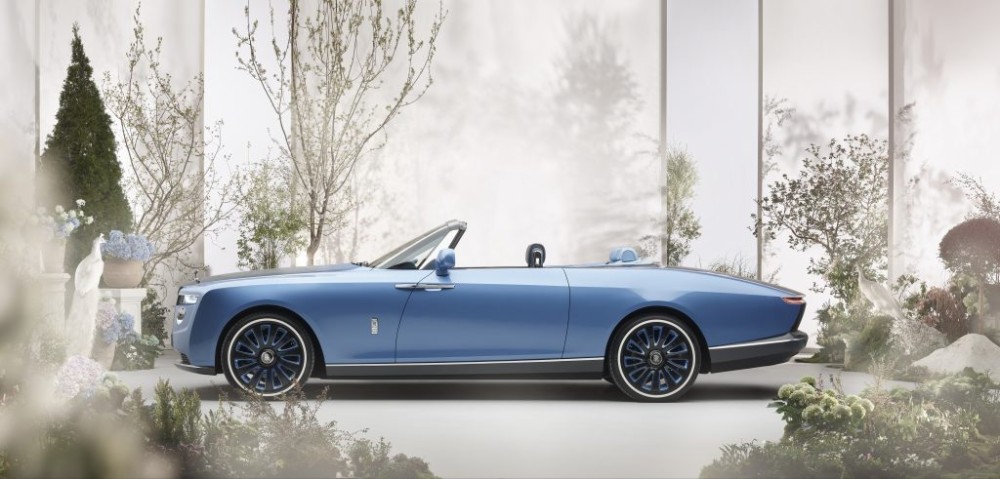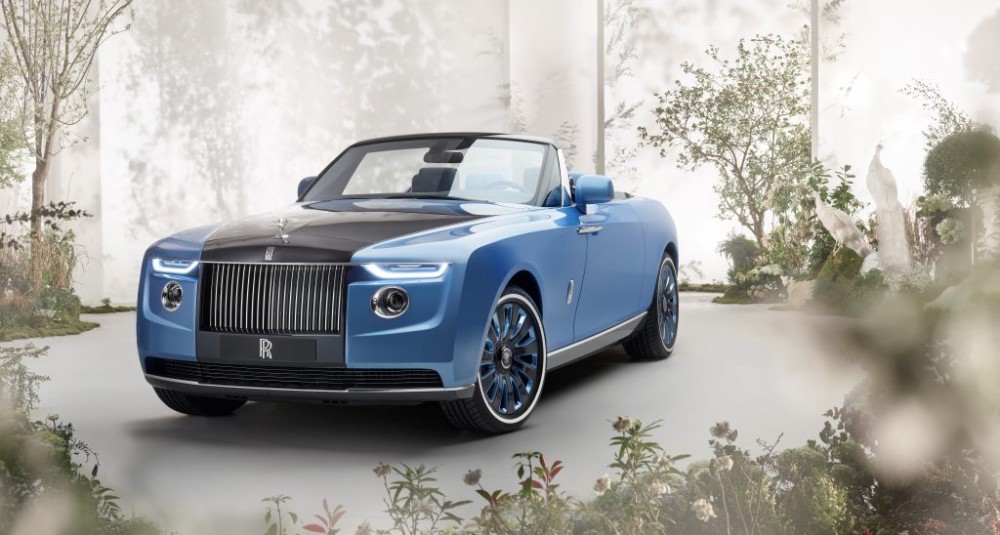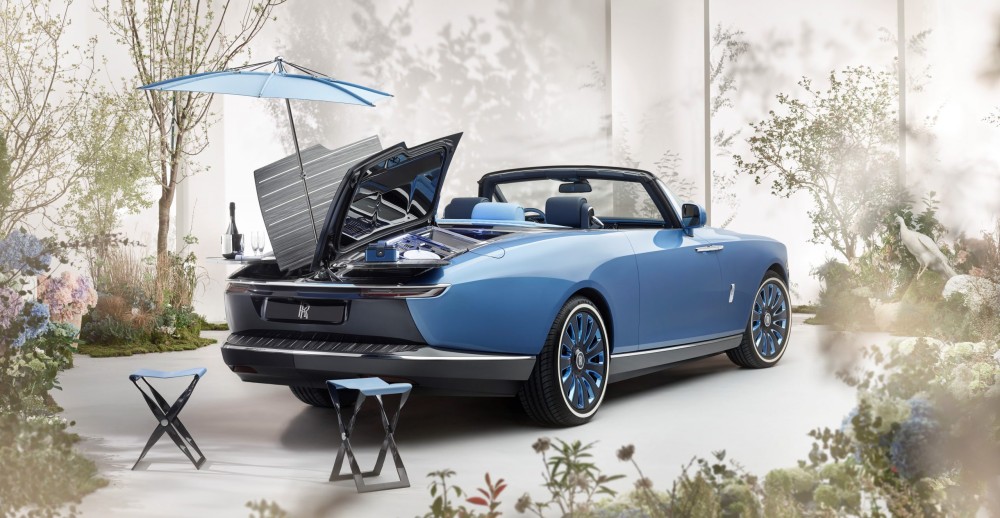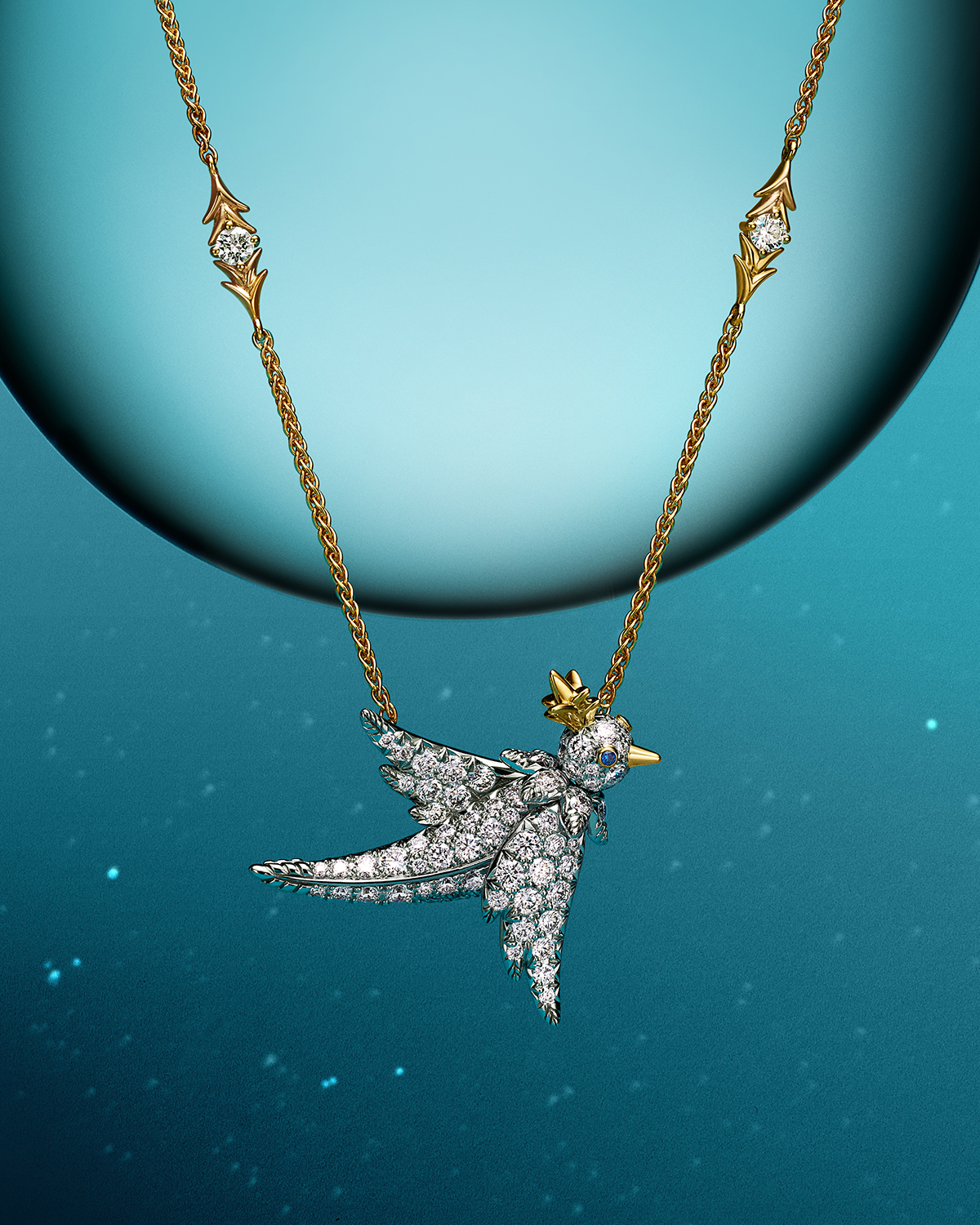
With only three in existence and each one entirely customised for its owner, the Boat Tail is not only Rolls-Royce’s most ambitious project to date but also the world’s most expensive new car at US$28 million. Head of Coachbuild Design Alex Innes tells Natasha Gillespie-Wong about the brand’s return to coachbuilding and the unique features requested by one client (who shall remain nameless)
When does a car become more than a means to get from point A to point B? If you ask Alex Innes of Rolls-Royce, it’s when the car becomes a destination in itself. And perhaps no car comes closer to that definition than the Boat Tail.
Entirely hand-built by Rolls-Royce artisans to the exacting specifications of “individuals of extraordinary achievement, culture and vision”, the new street-legal motor cars are the automotive equivalent of haute couture. Described as a road cruiser, the first Boat Tail to be released features a structural coachbuild layout with an open-top coupe, removable canopy roof and built-in picnic table and chairs.
Its nautical silhouette evokes J-class racing yachts while the double refrigerator keeps the owners’ Armand de Brignac champagne at a precise six degrees. Rumour has it that the elusive Boat Tail owners include entertainment royalty Beyoncé and Jay-Z, but speculation aside, the car speaks for itself.
Rolls-Royce held out until after WWII to transition from coachbuilding to unibody building. What inspired the move back to coachbuilding?
As a luxury house, we believe that the future of luxury is individual and personal. We know that there’s the opportunity now to work in close collaboration with our very, very best clients to create historic motor cars of great cultural significance. The scope of that will only increase in the future, where we fully utilise the techniques in the artistry related to coachbuilding and hand-building motorcars.
The Boat Tail is now the most expensive new car on the market. How does it compare to other Rolls-Royce vehicles?
It transcends being a mere means of transportation. It’s not a vehicular movement. It’s not about getting from one place to the other. It becomes a destination in itself. There’s this wonderful quality of service that comes with the Boat Tail, particularly in the way that the hosting area is configured. It’s a quality that exists in most Rolls-Royces in the sense that although they’re very grand in their appearance, they’re beautiful in the way that they go about what they do.

How did the idea of designing a car based on a yacht come about?
In essence, it’s sort of this notion that [cars] are no longer just a means of convenience, that the journey is the real fulfilment. The same way that you would use your racing yacht if you weren’t racing – it’s the sheer pleasure and fulfilment of using it, not necessarily getting somewhere. That’s the spirit that we wanted to imbue into the Boat Tail concept. Of course, it takes on other more explicit forms in terms of aspects of the car that directly mimic nautical influences.
What are some of the unique features that draw inspiration from J-class racing yachts?
J-class racing yachts are reliant on hand craftsmanship to realise the potential of their design. Their purity, their simplicity, but also the purpose of their function and the fact that the form itself is directly influencing its function. They’re just achingly beautiful things to observe, mainly because of the simplicity that’s involved in their overall appearance and reliability. The craftsmanship, the techniques, the construction of these particular vessels share the same philosophy that’s in play with the realisation of the Boat Tail.
What inspired the “aft deck” featuring crockery and even caviar?
The large aft deck mimics the long low section on a racing yacht and the wraparound visor treatment on the windscreen mimics the treatment of early motor yachts as well as the raised bow and overall gesture and orientation of the car. The spirit of usage is directly derived from the nautical space mixed up inside the cabin. A pair of clocks in the fascia can be removed and worn on his and her wrists. That sense of magnanimous hosting was something that we wanted to really capture in the car, but deliver in a truly Rolls-Royce fashion.
That was the starting point for the configuration of the hosting area, knowing that it also offered an opportunity to capture the deeper personality and sensibility of the commissioning client. The car is there to serve and there to be at the disposal of the owners. We wanted to take that forward in the sense that we would not only serve the owner, but we were there to host.
Why include timepieces in the design? Does this mark Rolls-Royce’s entry into horology?
Absolutely not. We were guided by the client in terms of fulfilling this very specific request. It offers a unique insight into the client’s personality, another one of their passions beyond Rolls-Royce motor cars. And that is, of course, horology.
So it’s not a proactive move on our part in any way, but I think the really enriching part about the collaboration, the creation of the timepieces, is that we were paired together [with Bovet 1822] purely on the basis of the client’s request. We are all leaders in our chosen disciplines and therefore the ground was set for a perfect mutual collaboration, motivated and propelled by our desires to excel. I think that’s why we ended up with such a spectacular result.
What was the most challenging process in creating the Boat Tail?
The extraordinary level of complexity derived across only three cars. We worked for over four years designing, developing and realising never-before-seen concepts and only doing that for three cars. That was an extreme challenge, but the car, by way of its philosophy in terms of design representation, is incredibly pure and incredibly simple.
You almost have to overachieve in terms of complexity to allow simplicity to establish itself, particularly with the exterior for the cars. The unbroken lines, the unencumbered surfaces, the vast expansive panels were very purposeful. Additionally they needed to be realised with great thought and great attention to detail. I think that was an incredibly challenging part of the process.
Only one Boat Tail has been revealed so far. Can you share any of the bespoke details of the other two?
I’m afraid I can’t share any details, but I can let you know that they will tell very unique stories about their owners and their lifestyles. That’s what is unique about creating a coachbuild motor car – it captures the personality and the character of the individual commissioning it.
If Rolls-Royce were to design a yacht, what do you think that would look like?
Part and parcel of the curation process is this sense of the unknown, that you don’t necessarily need to know what you want the end result to be before you start. It’s through exchanges with the design team that you progress. It’s unusual for people to know immediately what they want. If anything, I’m slightly overwhelmed by the possibilities.
But almost certainly, it would be a very contemporary projection of the mark, because throughout its history Rolls-Royce has been defined by this principle of progress. And if anything, coachbuilding now offers us a portal to accelerate that endeavour, to create things that will serve as turning points in chapters for the future design direction of the brand.
See also: Rolls-Royce unveils the US$28m Boat Tail







